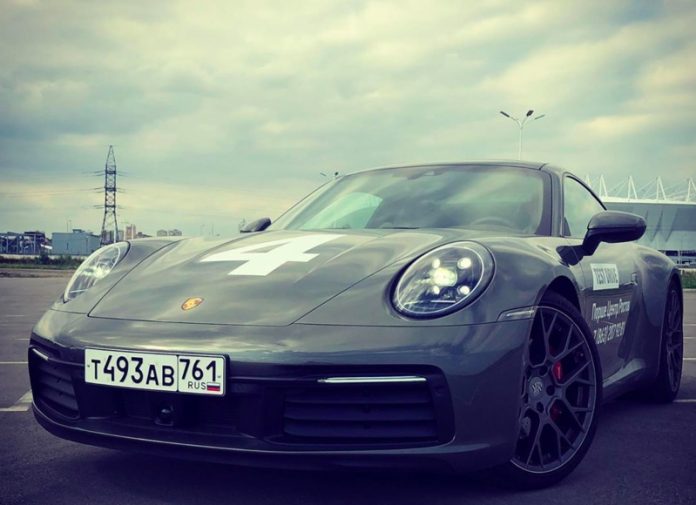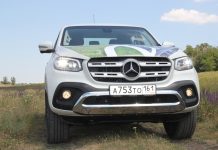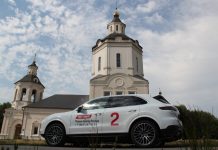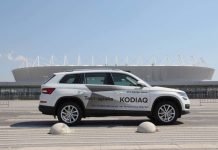The world saw the next generation of the Porsche 911 sports car at the end of last year, but Russian fans of the brand were able to get acquainted with the new model only this year. About a month ago, sales officially started in our country, the portal “Southern Automobile” was one of the first to test the new Porsche 911 in the all-wheel drive version Carrera 4S on public roads.
Technology in a classic shell
An inexperienced person will not be able to distinguish which generation a particular Porsche 911 belongs to by its appearance. The last three generations of the sports car, starting with the 997 body, are similar to each other. Continuity of generations is one of the main advantages of the German school of automotive design. The current generation of the Porsche 911 is already the eighth. The new body received the factory designation 992. Externally, it is almost indistinguishable from its predecessor in the 991 body. The new model boasts modified bumpers, longitudinal ribs on the front trunk lid, and electric door handles.

The front headlights have become matrix, and at the rear, an LED bridge and a third brake light in the form of two vertical stripes appeared between the taillights. This is where all the obvious differences in the exterior end. But still, the new 911 is completely different. According to the manufacturer, 80% of the new model is completely new. When creating the new 911, the engineers tried to evoke associations with the classic Porsche models that were produced in the 60s and 70s in new owners. The car has become slightly longer and wider, and the body is more rigid. In essence, this is the classic 911 with its “frog” appearance, but which has become more modern and stuffed with innovative technologies. The body of the new 911, except for the front and rear ends, is made of aluminum, which made the car lighter. The wheels are now not only different widths front and rear, but also different sizes. The front wheels are 20-inch, and the rear ones are 21-inch. Previously, this was only available on the RS versions. Thanks to this solution, the car confidently holds the road at high speeds.

Interior
Minimalism reigns in the interior architecture; leather and wood veneer do not look luxurious here, but on the contrary, look purely utilitarian. A tribute to classic Porsche is the beveled dashboard, upholstered in leather. The previous scattering of buttons on the gearbox tunnel is gone, now featuring piano lacquer inserts. The new generation Porsche 911 has lost the traditional gear lever with aluminum trim elements; instead, it features a small joystick. Two separate buttons are used for Parking and Manual modes. The instrument cluster is similar to the new Panamera and Cayenne. An analog tachometer is located in the center, flanked by LCD displays. The driver can customize the information displayed on them.

The multimedia system screen has become larger, now measuring 10.9 inches diagonally. The image is clear and rich, reminiscent of modern tablets. Most of the car’s settings are controlled via the main display. The exhaust control function, previously controlled by a separate analog button, has been hidden in the electronic menu. You also have to manually raise the spoiler through the multimedia system menu.

It’s good that the air vents can be adjusted manually, and not through the electronic climate control menu, as is implemented in the latest generation Porsche Panamera. Of course, there are some downsides to the ergonomics of the interior. For example, the buttons for the electric seats are not very convenient to use. The distance between the closed door and the seat controls is minimal, making it difficult to fit your hand. If you have very large hands, you can only adjust the seat with the door open. The seats, with excellent lateral support, have numerous electrical adjustments and electric heating, but there is no ventilation, despite the perforated leather on the seats. The space in the back is nominal. The interior is configured according to the 2+2 formula – two adults and two children. The back seat is only good for carrying a small bag.

Engine and gearbox
Like the latest cars in the previous body, the new Porsche 911 is equipped with a three-liter boxer engine with two turbochargers. In the new generation, the engine has been slightly modified, improving its characteristics. The engine has a new aluminum exhaust manifold and an improved injection system. In addition, the engine is now equipped with a particulate filter, like in diesel engines. This was done not for the purpose of technical improvements, but because of new European environmental standards.

Engine power has increased by only 30 horsepower. Previously, this same engine produced 420 hp; now it produces 450. The sports car is equipped with a PDK dual-clutch automatic transmission, developed jointly with engineers from ZF. The transmission now has eight gears instead of seven. A manual transmission version is not yet available, and it’s unclear whether one will be available at all.
Thanks to the new transmission and increased engine power, the new Porsche 911 is faster than its predecessor. The all-wheel-drive version accelerates from 0 to 60 mph in 3.6 seconds. Previously, this figure was four seconds. The car we tested is even quicker, as it is equipped with the Sport Chrono Package. When starting from a standstill using two pedals and Launch Control, the all-wheel-drive Carrera 4S accelerates from 0 to 60 mph in 3.4 seconds. The top speed is 306 km/h.

I’d like to especially highlight the new PDK automatic transmission, which shifts gears in a fraction of a second and lets you experience the car’s full power and torque range. If you’re used to revving the engine yourself, you can drive manually using the steering wheel paddle shifters. Despite its excellent performance, the new 911 has become more fuel-efficient. The Porsche 911 Carrera 4S consumes just 7.9 liters of gasoline per 100 kilometers in the combined cycle, compared to 9 liters previously. In top-end trim levels, like its predecessor, the Porsche 911 chassis is all-wheel steering with rear-wheel steering and adaptive dampers.









